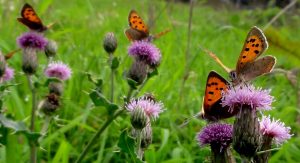David Plummer, 2017. 7 Years of Camera Shake, One Man’s Passion for Photographing Wildlife. Unbound. 256pp. In aid of Parkinson’s UK. ISBN 978 1 7852 392 4
Renowned wildlife photographer David Plummer found that he had Parkinson’s when he was 40 seven years ago. This book is a perspective of his work. The picture perfect images from around the tropics, Africa, Asia, the Americas and the Galapagos show wildlife in close-up, mostly birds, mammals and reptiles with some from his base in Sussex. The book is a delight (large format 28x26cm), an impressive production with a single amazing photograph on each page accompanied by a brief description. The colour reproduction is spot-on showing off the stunning colours of toucans, skimmers, owls and kingfishers. His patience in getting the right shot of leopards, and jaguars in the Pantanal is evident in the photographs, and his arduous field techniques are explored. This is a book that is worth having for just for its amazing photography. It is crowd-sourced by the many people who have contributed to the publishers Unbound and half of the profits go to Parkinson’s UK (https://www.parkinsons.org.uk/).


